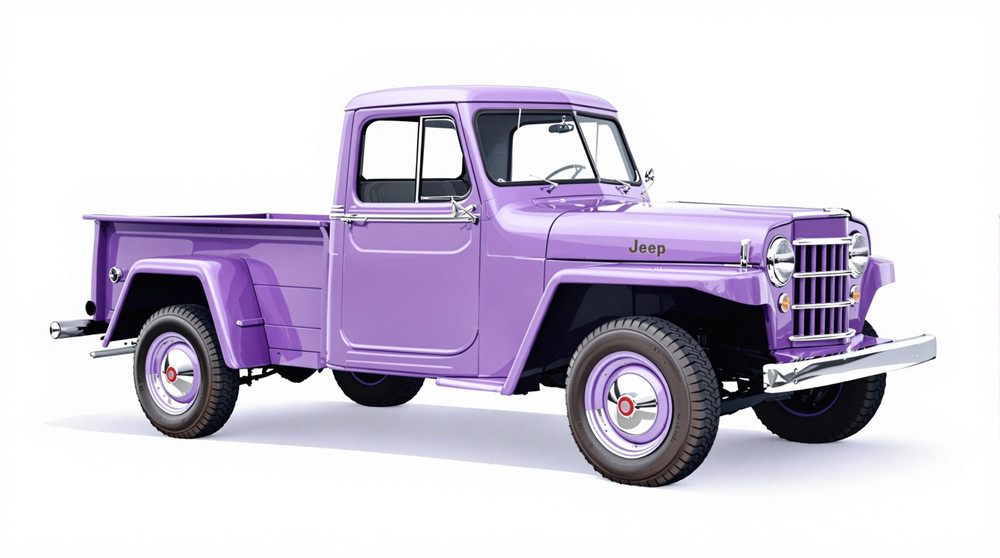Image of 1958 Jeep 6-226, Note: These illustrations use artistic license and may differ from actual historical models.
Performance Metrics
Fundamental Metrics
Emotional Appeal
MMP Rating
| Engine Specifications | |
|---|---|
| Engine: | Super Hurricane Inline 6 |
| Displacement: | 226 cu in (3.7 L) |
| Horsepower: | 105 hp |
| Torque: | 190 lb-ft |
| Compression Ratio: | 7.5:1 |
| Ignition System: | Distributor and coil |
| Cooling System: | Liquid-cooled |
| Performance Specifications | |
| 0-60 Time: | Information not available |
| 1/4 Mile Time: | Information not available |
| Top Speed: | 60-70 mph |
| Transmission and Drive | |
| Drive Type: | 4WD |
| Transmission Type: | 3-speed manual |
| Fuel and Efficiency | |
| Fuel System Type: | Carburetor |
| MPG: | 10-15 mpg |
| Dimensions and Brakes | |
| Brakes: | Drum brakes |
| Wheelbase: | 118 in (2997 mm) |
| Weight: | 3500 lbs |
Note: Specifications for classic cars are given to the best of our ability, considering the limited and variant data available.
The Unyielding Workhorse: The 1958 Jeep 6-226
The year 1958 heralded the arrival of a vehicle that would become synonymous with rugged durability and utilitarian charm: the Jeep 6-226. Born from the legacy of wartime reliability, the Jeep 6-226 emerged as a testament to the Willys-Overland Motors' commitment to producing robust vehicles for a peacetime America. This utilitarian marvel not only carved its niche in the annals of automotive history but also became an emblem of American resilience and ingenuity.
Design and Innovation
With a design that was straightforward and functional, the 1958 Jeep 6-226 sported an exterior that was unpretentious yet iconic. The vehicle's boxy silhouette, rounded headlights, and trademark seven-slot grille were a continuation of a design language that had become unmistakably Jeep. Inside, the interior was spartan with an emphasis on durability; materials were chosen for their ability to withstand the elements and rough use rather than for luxury. Technologically, the Jeep 6-226 was ahead of its time with its powerful Super Hurricane inline-six engine, a four-wheel-drive system, and a robust chassis that could take on challenging terrains with ease. Color options ranged from traditional military hues to more civilian-friendly choices, with President Red and Plantation White being popular among them. The most iconic body style was undoubtedly the Station Wagon, which combined utility with a semblance of family comfort.
Historical Significance
The 1958 Jeep 6-226 stood out for its versatility and became a symbol of post-war American automotive culture. It bridged the gap between military and civilian life, offering a vehicle that could tackle farm work, off-road adventures, and suburban living with equal aplomb. Its influence on future SUVs and off-road vehicles is undeniable, setting the stage for a genre that would explode in popularity decades later.
Performance and Handling
Performance-wise, the Jeep 6-226 was more about torque and utility than outright speed. While top speed and acceleration figures were modest by today's standards, it was the vehicle's ability to traverse rough terrain that won over its admirers. The ride was bouncy, and handling on windy roads required attention, but the sound of the Super Hurricane engine and the sense of control it offered were part of the unique driving experience that made owners proud.
Ownership Experience
The Jeep 6-226 found its place as a daily driver for some, while others used it for more recreational purposes such as hunting or fishing trips. Its reliability was one of its strong suits, and when maintenance was required, the simplicity of its design made repairs relatively straightforward for the average owner.
Fun Facts
A little-known fact about the Jeep 6-226 is that it was one of the first vehicles to offer a power take-off (PTO) feature, allowing it to power farm equipment and other machinery. While not necessarily known for breaking speed records, it set a standard for utility that few could match. Despite common criticisms about its Spartan comforts and no-frills interior, it remained beloved by many for its practicality.
Collector's Information
Today, the 1958 Jeep 6-226 holds a special place in the hearts of collectors. With production numbers not as high as mass-produced cars of its era, it's considered relatively rare. The value range for a well-maintained example can vary widely but typically ranges from $10,000 to $30,000 depending on condition and originality. As appreciation for classic SUVs continues to grow, the Jeep 6-226 is likely to see a steady appreciation in value.
Conclusion
The 1958 Jeep 6-226 remains an enduring symbol of mid-century American automotive engineering. Its blend of simplicity, capability, and versatility has ensured its legacy not only as a workhorse of its time but also as a cherished classic for collectors and enthusiasts alike. Whether on a rugged trail or parked at a classic car show, this Jeep continues to turn heads and capture imaginations, just as it did over six decades ago.
1958 Jeep 6-226 Catalog of Parts
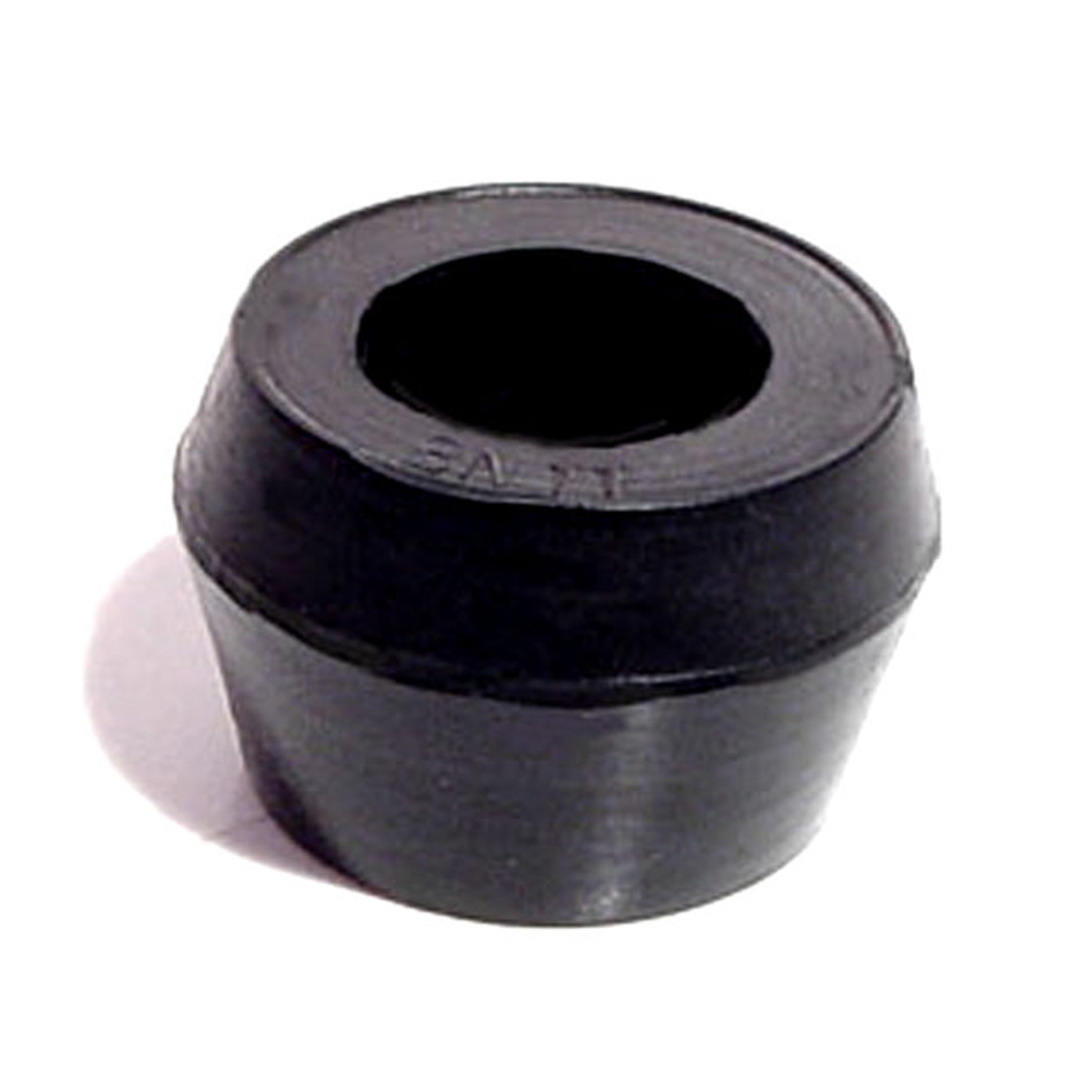 1958 Jeep 6-226 Shock Absorber Grommet. 1" bottom O.D-BN 11Shock Absorber Grommet. 1" bottom O.D., 3/4" high, with 5/8" I.D. Each
1958 Jeep 6-226 Shock Absorber Grommet. 1" bottom O.D-BN 11Shock Absorber Grommet. 1" bottom O.D., 3/4" high, with 5/8" I.D. Each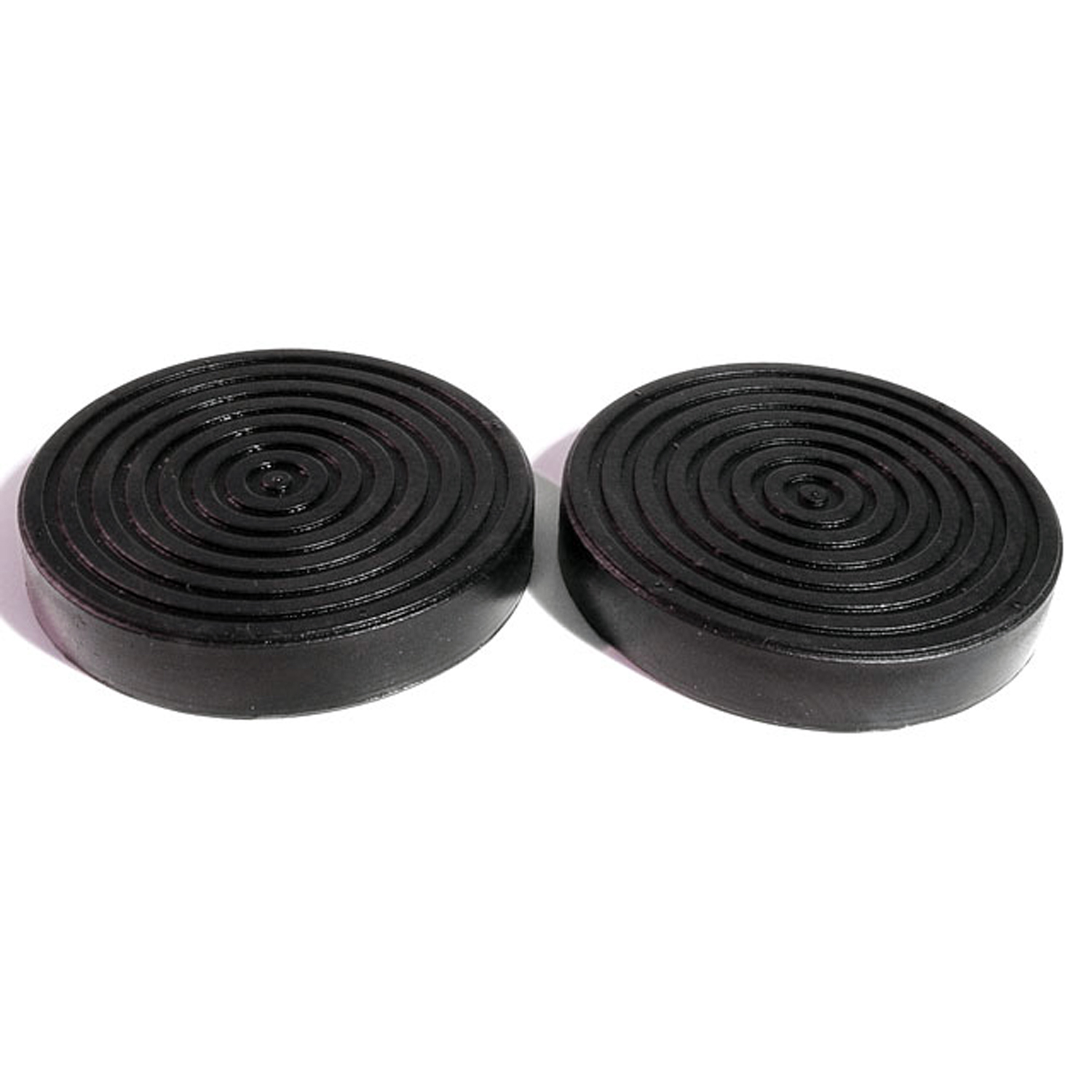 1958 Jeep 6-226 Clutch and Brake Pedal Pads. 3" Diameter. Pair-CB 61Clutch and Brake Pedal Pads. 3" Diameter. Pair
1958 Jeep 6-226 Clutch and Brake Pedal Pads. 3" Diameter. Pair-CB 61Clutch and Brake Pedal Pads. 3" Diameter. Pair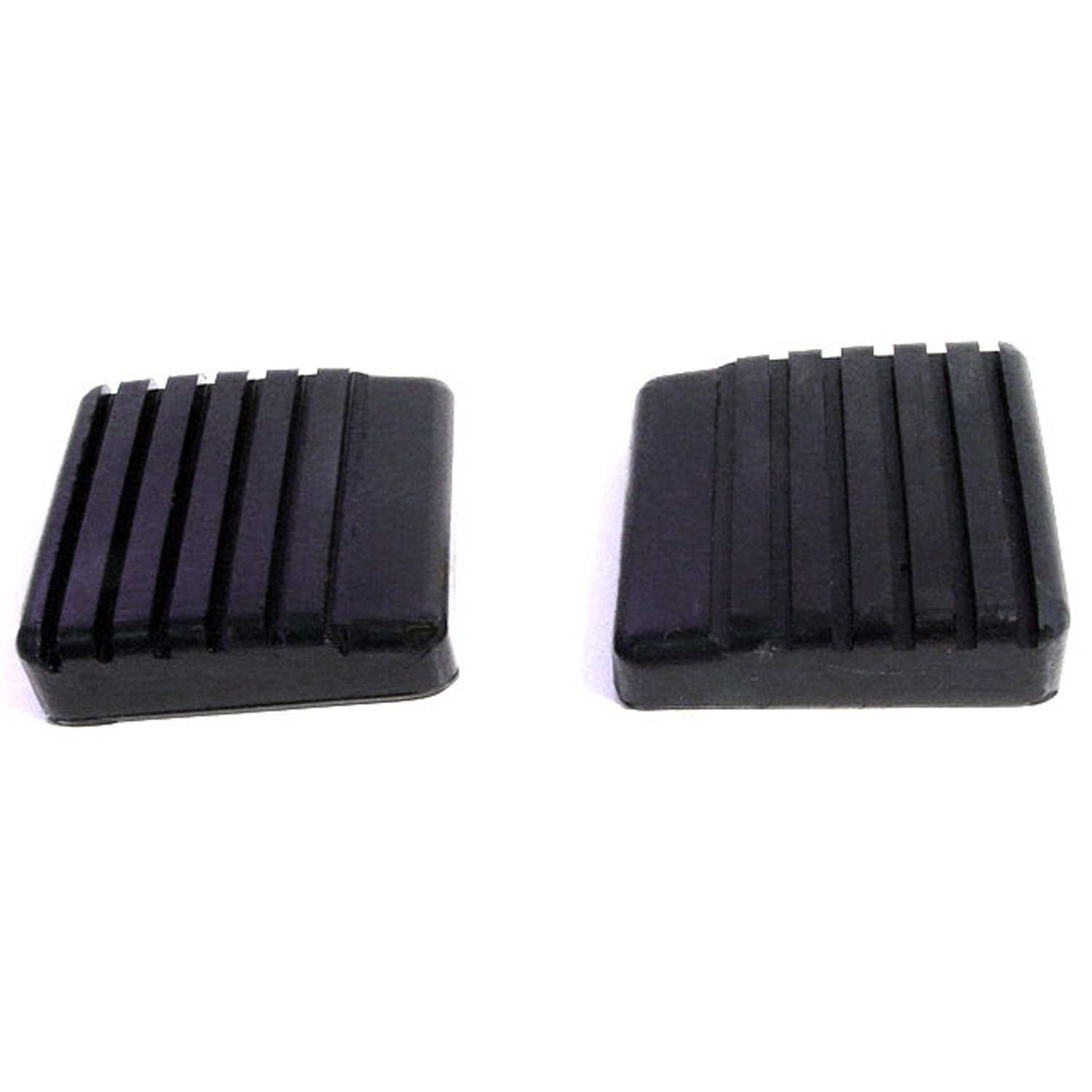 1958 Jeep 6-226 Clutch and Brake Pedal Pads. Pair-CB 61-BClutch and Brake Pedal Pads. Pair
1958 Jeep 6-226 Clutch and Brake Pedal Pads. Pair-CB 61-BClutch and Brake Pedal Pads. Pair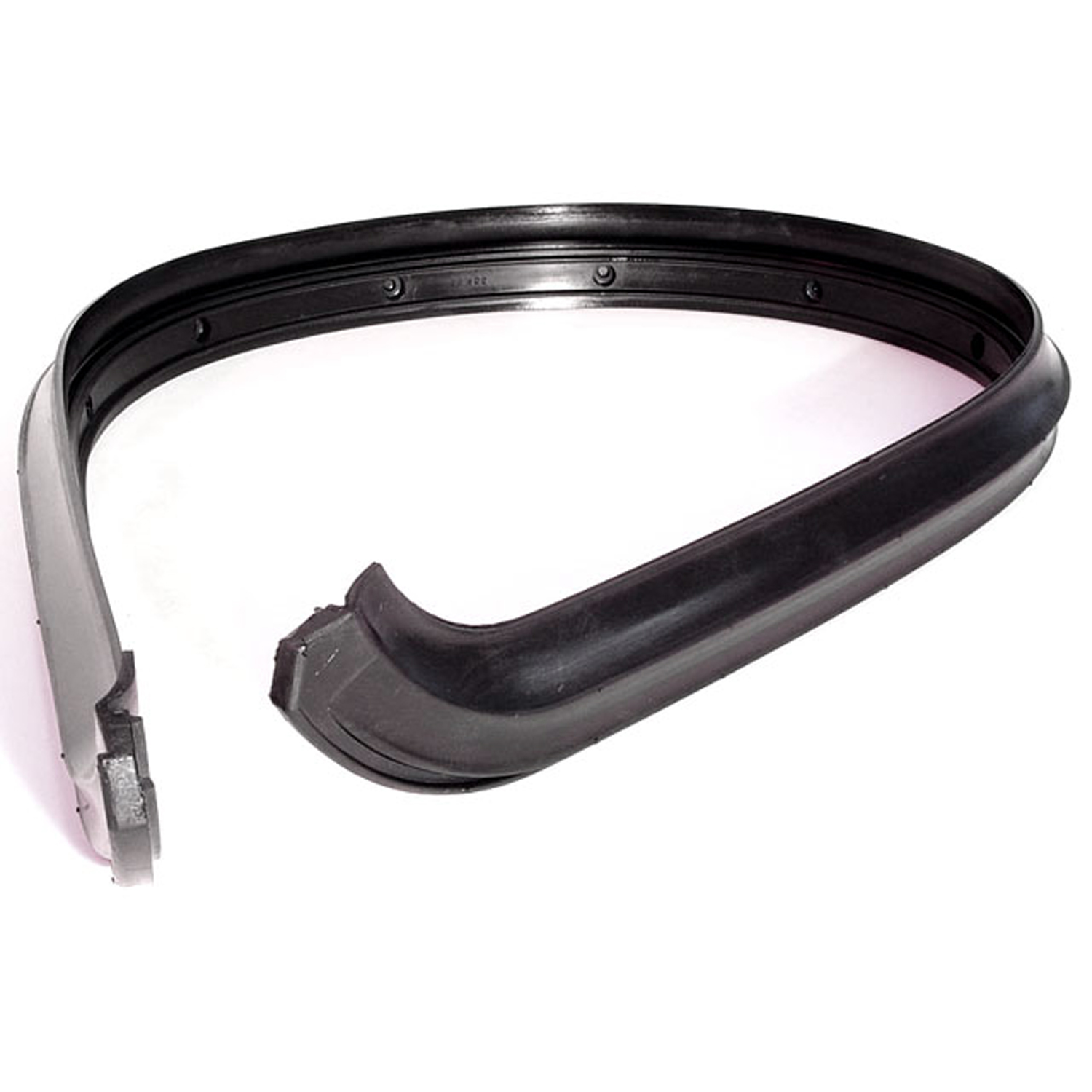 1958 Jeep 6-226 Windshield to Cowl Seal. 55-1/2" long. Each-CS 102Windshield to Cowl Seal. 55-1/2" long. Each
1958 Jeep 6-226 Windshield to Cowl Seal. 55-1/2" long. Each-CS 102Windshield to Cowl Seal. 55-1/2" long. EachWhy Choose Metro?
For over 100 years, Metro Moulded Parts has been the pinnacle of quality in classic car restoration parts. Our commitment to precision and authenticity in every component ensures a perfect fit and an OEM-level appearance.
- Expert Craftsmanship & Quality: Each part is a testament to our dedication to reliability and perfection, crafted from original designs and thoroughly tested.
- Advanced Technology: We use cutting-edge techniques to create flawless, long-lasting parts that surpass others in performance.
- SuperSoft Sponge – The Ultimate Door Seal: Not only are our door seals 30% softer than competitors', but they're also guaranteed to never leak. They effectively reduce wind and road noise, enhancing your classic car's comfort and driving experience.
- Proudly American: Our parts are a product of American craftsmanship, made in the USA with a spirit of excellence and heritage.
- Unrivaled Warranty: We back our products with a 30-year industry-leading warranty, a testament to our confidence in their quality.
Join us in preserving the legacy of classic cars with parts that are crafted for perfection, not just made.

